Nearly 50 Chinese restaurant closures forces change by next generation
The lazy Susans have ceased spinning at some of Sydney’s best-known Chinese restaurants. But young operators are shunning tradition and charting a new path.
Sydney has lost nearly 50 Chinese food venues in the past 18 months, according to the president of the Chinese Precinct Chamber of Commerce, Wayne Tseng.
“Since February 2023, 49 establishments have either closed or changed their operations,” Tseng says.
The list of suburban closures includes Chatswood’s King Dynasty and Chao Kong Chinese Restaurant in Eastwood and Chan’s Canton Village, which opened in 1980 at Casula. Numerous high-profile Chinese restaurants have also closed, among them Redfern’s Good Food Guide-hatted Redbird, China Diner in Double Bay, Crown’s elevated Silks, and Lotus, which pivoted its Double Bay location to takeaway-only.
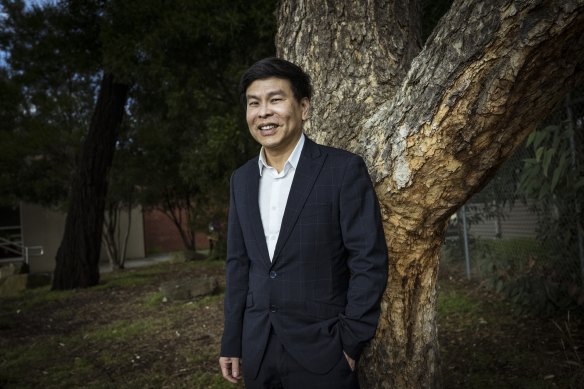
One of the problems facing traditional Chinese restaurants in Australia is the business model on which many first prospered: the artificially low wage cost of family restaurants, Tseng says.
Low wages kept menu prices and operating costs flat – a financial advantage not shared by modern Chinese restaurants, which operate in an era of government compliance, staff entitlements, rising costs and rents – particularly in the city areas where many Chinese restaurants are located.
When COVID arrived, it affected business even further, and kicked off a brutal period for Sydney’s iconic Chinatown restaurants.

In August 2020, the 40-year-old BBQ King closed. A year later, 39-year-old Marigold Chinese Restaurant followed, citing several factors but primarily the pandemic, and 32-year-old Golden Century, a favourite among a roll-call of chefs, slid into voluntary administration. Then the three-decades-old Zilver restaurant in Haymarket shut last year, the building it occupied slated for redevelopment.
But Tseng says he is confident that operators are adapting. “Mid-market restaurants are getting smarter, reducing the number of menu items they offer,” he says. “Every industry has to evolve. Sometimes that means unshackling from the old model.”
One such restaurant is Yum Cha Project, which opens at Grosvenor Place in the Sydney CBD on August 8. Aiming to set itself apart from more traditional Chinese restaurants, it will pack takeaway dumplings in pizza and hamburger boxes, and Peking duck pizza will be available as a side order.
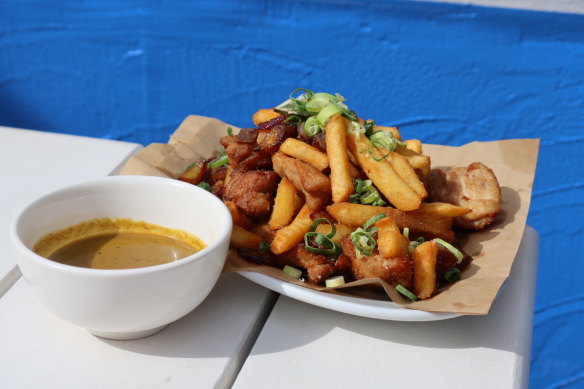
“I don’t want this to be another luxurious Sydney Chinese restaurant,” says owner Howin Chui. “I want to be like Guzman y Gomez, an Australian brand growing domestically and internationally.”
The restaurant has 50 seats, much smaller than the huge traditional yum cha restaurants, and there will be no yum cha trolleys or long waits for tables, only large stacks of steamers and quick delivery. Customers will be able to order yum cha by the piece, rather than overloading on a whole basket of a single type of dumpling.
Chui is similarly confident there is a wider revolution taking place in the Chinese restaurant market. He points to a growth in niche players, such as the recent explosion of Irish Chinese food in Sydney. At venues such as Paddy Chans in Kensington (a Newtown branch is on the way), Chinese food and hot chips co-exist in a dish called a “spice bag”.
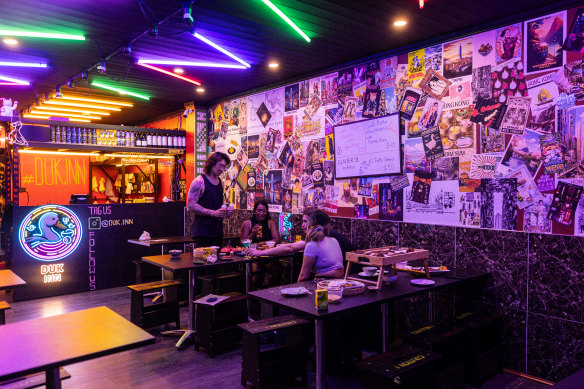
Chui attributes some of the restaurant casualties to a reluctance to evolve. The look and business model of many traditional Chinese restaurants has remained unchanged for more than half a century, he says.
“Marketing isn’t a strength of Chinese restaurants. The word ‘marketing’, for many older Chinese restaurateurs, is like a scam,” says Chui. He has signed chef Vincent Yeow Lim – who, under the handle Dim Sim Lim, has more than 4 million social media followers – as an ambassador at Yum Cha Project.
Newtown’s Duk Inn co-owner Johnathan Wu, who grew up above his family’s Chinese restaurant in Burwood, is another restaurateur trying a fresh approach. He says when Duk Inn opened late last year, he was told that all he needed for success was “word of mouth and a pamphlet drop”.
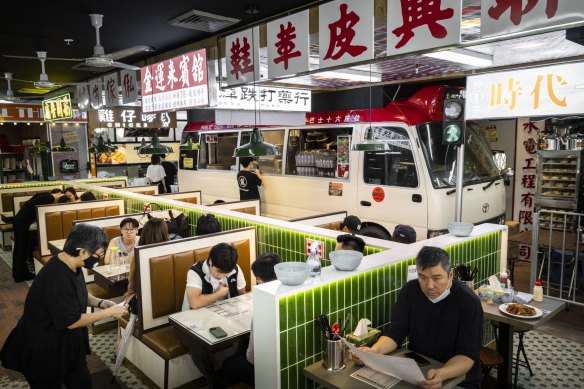
Duk Inn’s vibrant interior, featuring multicoloured neon lights, a photo of its owner as “Chairman Wu” and a mural of a fortune cat riding a rubber duck, is proving a hit with diners, though it doesn’t impress his parents’ generation. “They think it looks like a nightclub, not a restaurant,” Wu says with a laugh.
Yum Cha Project eschews conventional Chinese restaurant design. Chui has opened a string of Sydney venues, from the moody Ni Hao Bar to slick Senpai Ramen, but his most memorable interiors are Kowloon Cafe in Burwood, where a Hong Kong minibus was reassembled on site and doubles as both bar and decoration, and Kowloon’s Eastwood venue, where a double-decker Hong Kong tram is wedged into the facade.
Yum Cha Project skips the public transport theme, leaning instead on bright yellow tiling and a neon sign of a smiling dim sum character.
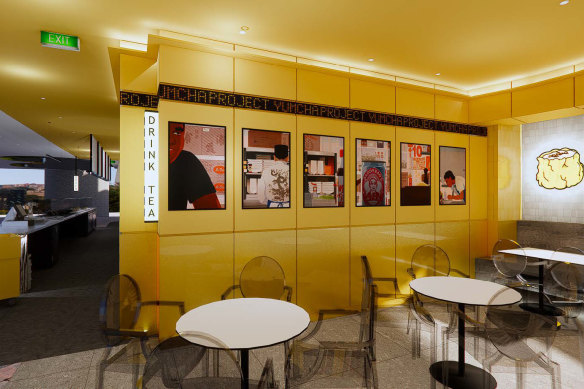
“Our mission for the Yum Cha Project is to make yum cha more accessible, affordable and convenient,” Chui says.
It will have plenty of traditional dumplings on the menu, along with the quirky Peking duck pizza, and another topped with shallot and chicken, on bases Chui describes as “similar to Lebanese bread”.
Because with Sydney’s Generation Next, anything goes.
Yum Cha Project will be open Mon-Wed 8am- 4pm, Thu-Fri 8am-8pm from August 8.
Shop 3, 225 George Street, Sydney (Grosvenor Place), instagram.com/yumchaproject
Related Article
Related Article
Continue this series
The new Sydney restaurants, bars and cafes we got excited about in AugustUp next

‘It’s coming back’: Why Icebergs’ Maurice Terzini is staking his money on Kings Cross
Three new reasons to visit the famed strip include a cabaret bar, an Italian-leaning wine bar rumoured to be by the Fratelli Paradiso crew and an ‘exciting’ tenant at the former home of Gourmet Life.
Previous

Attenzione! There’s a hot new Italish-ish restaurant and wine bar to try in Redfern
Forget about the burrata - the Fabbrica alumni are going off script with an experimental menu.


